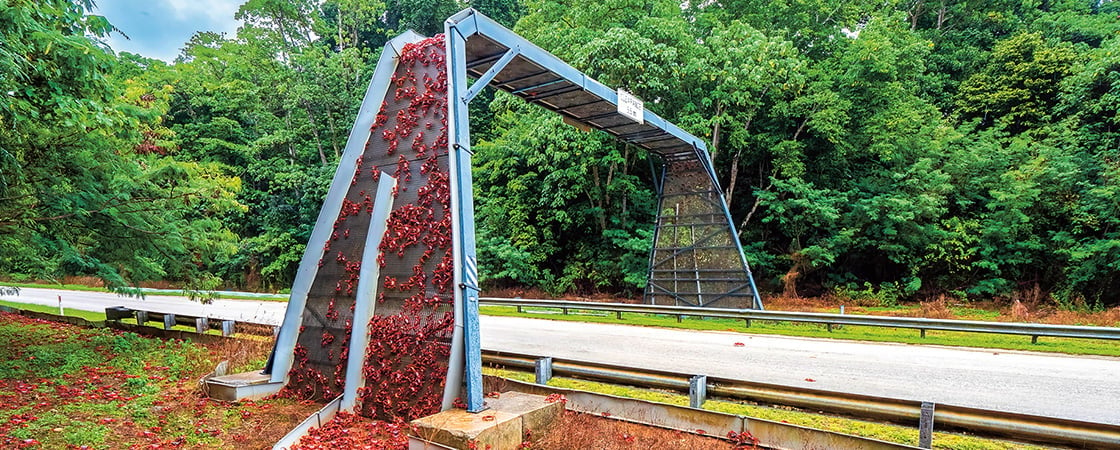A migration is when animals (or people) move from one place to another. Every year between November and January, millions of crabs on Christmas Island take part in a migration. They travel from the forest to the beach. This is where they go to lay their eggs.
But it’s a dangerous journey. The crabs have to cross busy streets to get to the beach. Many crabs get crushed by cars driving on the roads.
Luckily, people on the island stepped up to help. They built a giant bridge over one of the island’s busiest streets. They also built tunnels under other roads for the crabs to creep through. Now the crabs can safely crawl to the beach and lay their eggs!

